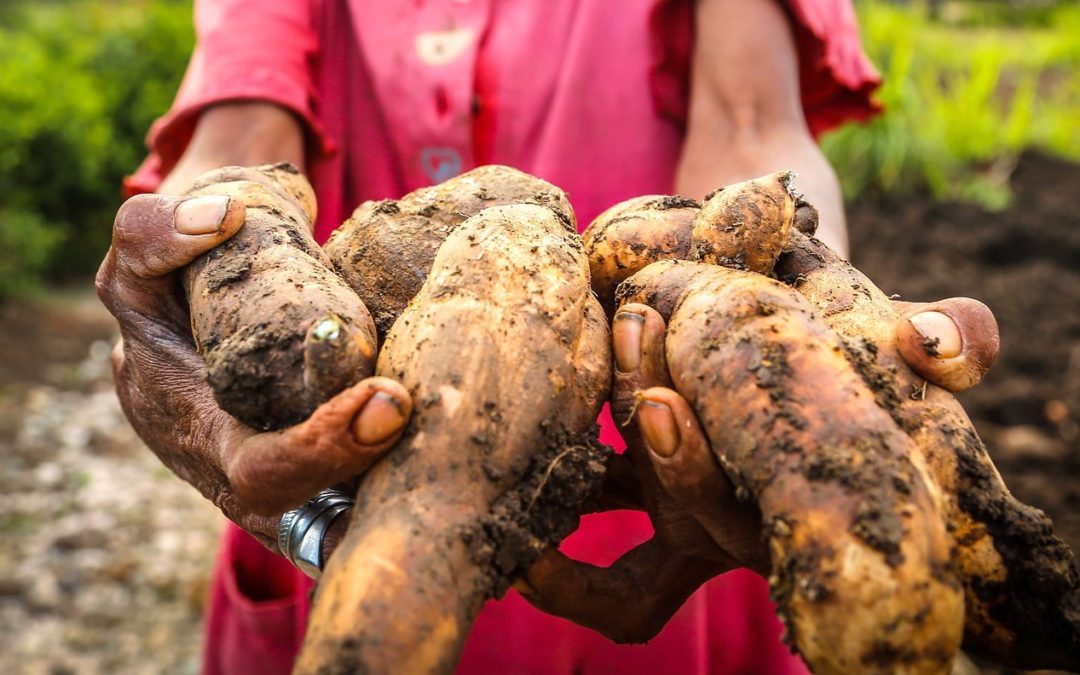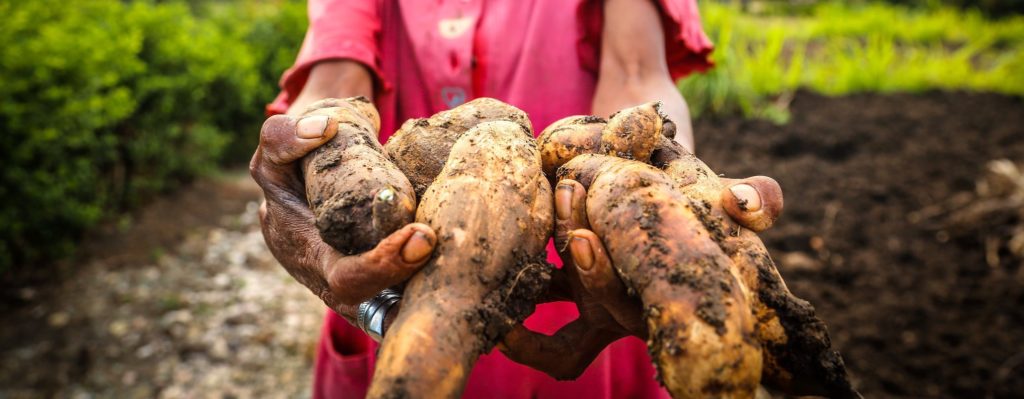Why was there no COVID-19 “food system collapse”?
Farmers step up to the challenge of accelerating the digitalization of global food systems
“COVID may not have started anything, but it has definitely accelerated our vision.” That is the attitude of Aashna Singh, co-founder of MoooFarm, an app that connects thousands of village dairy farmers in India with veterinarians, cattle markets and the farming knowledge of the community.
India is the world’s biggest producer of milk, but when COVID-19 hit the state of Punjab, milk prices crashed as dairy input costs went through the roof. “The rural economy took a big hit,” Singh said, “and farmers have faced more challenges than usual.”
But these challenges only spurred Singh and MoooFarm to accelerate development of the app and respond quickly to the urgent needs of farmers by releasing new features, such as the MoooFarm Saba forum that now includes a cattle trading market.
Alpha Sennon, founder of Trinidad and Tobago agriculture education non-profit WhyFarm, has also noticed what he calls the “creative” effect of COVID-19.
“Some of the things that we are doing are things that we always wanted to do, and COVID-19 really pushed us,” said Sennon. “Obstacles turn into opportunities; challenges allow you to become creative. That is the world that we live in now.”
In the time of COVID-19, food is medicine
Sennon and Singh were speaking at CGIAR’s Platform for Big Data in Agriculture annual conference, originally scheduled to be held in Lima, Peru. But rather than becoming another victim of COVID-19, it was instead transformed into an elegant demonstration of its theme and reconstructed into a digital conference, with participants from all sectors – from farmers to academics and policymakers – and all parts of the globe joining to discuss the theme, “Digital Dynamism for Adaptive Food Systems.”
The CGIAR research consortium defines “digital dynamism” as “the new food system-wide capabilities that can be built in the context of rapidly digitizing economies and societies worldwide,” and a constant narrative during the conference was how the “heroes and heroines” of the global farming community have leveraged digitization’s benefits – expediency, efficiency, connectivity, innovation – to rise to the dark challenges of the pandemic.
“We were all expecting a food system collapse,” said Andy Jarvis, associate director general of Alliance Bioversity-CIAT and one of the driving forces behind the CGIAR Platform for Big Data in Agriculture. “People were panic buying and did not have confidence in the food system and in our farmers. But the farming community has worked incredibly hard, the food system has stood up, and we have all remained well-nourished through this crisis.”
Ndidi Nwuneli, an agriculture and nutrition consultant from Nigeria, believes that the pandemic has forced people to acknowledge the central importance of the food system. “We are realizing that food is medicine,” she said, “and that you cannot design health infrastructure without food infrastructure.”
On the other side of the Atlantic, at the Common Good City Farm in Washington DC, farm manager Tracy Knapp noticed exactly the same response from local people.
“This pandemic has shown the need that we have to know how to collect our own water, how to harness our own energy, how to grow our own food,” said Knapp. “Knowing how to feed yourself and others is so important and something that is needed for the next generation and every generation to come.”
So what of the next generation? In a time of rapid urbanization, who will feed us in the future?
From cow dung dreams to hydroponic sneakers
“It is not every child’s ambition to grow up and be a dairy farmer – anything related to cow dung is not a glamorous profession,” said Singh. But she has found that digital technology can break through this lowly perception of farming.
“The youth may not want to be involved in the everyday cleaning of the farm, but they can still help their family digitally,” she said. “And when they see profits increasing, their interest in the sector also increases.”
At WhyFarm, Sennon says he has seen a significant increase in young people wanting to start farming and planting, particularly in their backyards, using tools and techniques such as hydroponics, vertical farming and digital resources. Growing plants in sneakers has come into the mix, leading Sennon to call the movement of young people engaging in agriculture “agri-cool-ture.”
“Many folks reached out to us and said we can’t go to work, we can’t go to the beach, we want to plant something,” Sennon said. “Doctors, lawyers, police officers, you name it – everyone is very much more interested in planting now… people want food that not only fills them, but fulfils them.”
Including the digital “have-nots”
However, there is a dark side to digitalization – sometimes literally. During the conference, poultry farmer Nicholas Bwayo struggled with power blackouts at his home in Nairobi, Kenya. “As you see, we have poor network systems in communication,” he said. “Despite the challenges, digital is still the best way to go, but 3G is too slow for us to do proper online marketing.”
As Ndidi Nwuneli has found in the course of her work in Africa, digital infrastructure can be the primary barrier to development. “We work with farmers to subsidize their data access and buy tablets and phones for them,” she said. “We are having to bridge that digital divide between the haves and have-nots.”
Andy Jarvis went further: “We should be seeing data access as a basic necessity, and the UN should be pushing this. It is impossible to have development unless people are connected.”
Of course, this is exactly the sort of message you would expect to hear from a conference organized by the Platform for Big Data in Agriculture, but Tracy Knapp sounds a warning note: “We need to make sure that we are using these digital tools to help the work we are doing, but some things cannot replace these in-person connections that we have with the Earth and with one another.”
“The mission is beyond just ourselves”
Knapp’s words are a reminder of the vast living ecosystem that lies behind our screens and all this big data. It is something that the conference delegates, many of them farmers themselves, never forget.
“Anyone who is part of this sector is doing something for the greater good,” said Singh. “The mission is beyond just ourselves.”
Singh’s words can be heard in two ways: that the mission of agriculture is a greater good that goes beyond an individualistic self-interest, but also that agriculture involves cooperation and cannot be done alone.
“COVID-19 has shown us more than ever before that we have to ‘go with others to go far,’ ” said Nwuneli, quoting from her favorite African proverb. “The beauty of digital is that it allows us to connect with people in ways that we have never done before, across boundaries, across countries and across continents.”
That is exactly what the 2020 Platform for Big Data in Agriculture conference has achieved: cultivating digital dynamism in food systems; sharing the weight of extraordinary challenges; and exchanging solidarity and solutions from fields and farms around the world.
October 26, 2020
David Charles
Latest news






